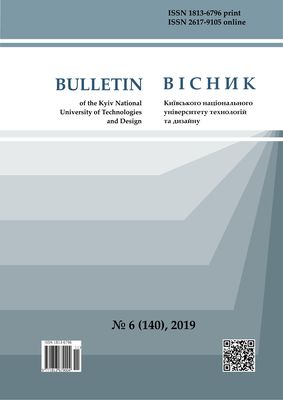The Influence of the Number of Electrode Pairs on the Error of the Electrochemical Polarization Resistance Sensor for Measuring the Rate of Atmospheric Corrosion
DOI:
https://doi.org/10.30857/1813-6796.2019.6.11Keywords:
polarization resistance method, atmospheric corrosion, multielectrode polarization resistance sensor, cosurface electrodes, error of corrosion rate evaluating, optimal number of electrode pairsAbstract
Investigate the influence of the number of electrode pairs of multi-electrode co-surface electrochemical polarization resistance sensors on the error of measurement of polarization resistance, and, accordingly, on the corrosion rate under atmospheric conditions. Method of polarization resistance. Determination of the contact area of electrodes with the aluminum substrate by the method of obtaining a print on a flat surface. Graphical modeling of the contact surface of the sensing element from the steel electrodes to the anodized aluminum substrate. Investigation results of the influence of the electrode pairs number of multielectrode cosurface electrochemical polarization resistance sensor, sensing element of which is steel-made and is located on the thermoconductive anodized aluminum substrate, on the measurement error of corrosion rate in atmospheric conditions are presented. It was shown that in determining of the corrosion rate by polarization resistance method the increasing of the electrode pairs number of sensor from one to four increases the reproducibility of measurement results and their convergence with the gravimetric data. Taking into account the form of prints of four-pair sensitive element, the area of surface contact of sensitive element of eight-pair sensor with aluminum substrate was graphically simulated. It was taken into account during modeling, that the design feature of the sensor is a possibility of full contact of one pair of the electrodes with the substrate, which explains the reason of measurement error increasing with increasing the number of electrodes’ pairs. Increasing the pairs number from one to four and then to eight decreases the part of surface of sufficiently tight contact of sensitive element with aluminum substrate from 100% to 50% and further up to 30 %. The extreme dependence of the measurement error on the number of electrodes pairs due to the increasing area of the working surface of the electrodes and reducing the area of tight contact with the aluminum heat-conducting base was revealed. It was found that four electrodes pairs for the presented sensor design is optimal. It was established that the reason of increasing of the error of polarization resistance measurement under atmospheric conditions and, accordingly, the corrosion rate, by using the electrochemical multi-electrode co-surface sensors of polarization resistance under increasing the electrode pairs number (from one to eight) is the decreasing in the surface part of a sufficiently dense contact of the sensitive element (about two or three times). Another tendency that leads to decreasing in error is decreasing in the error of setting the corresponding polarization while increasing the total area of the electrodes. The extreme dependence of this error on the number of electrode pairs with a minimum for a four-pair sensor is shown. The problem of uncontrolled variation of the measurement error by using the polarization resistance sensor of the considered construction was solved and the optimal number of electrode pairs (four) was determined. Using such of a sensor will allow to evaluate the corrosivity of the atmospheric air environment with respect to the responsible metal structures and their corrosion state in local corrosion-dangerous places with stable and minimal error.

